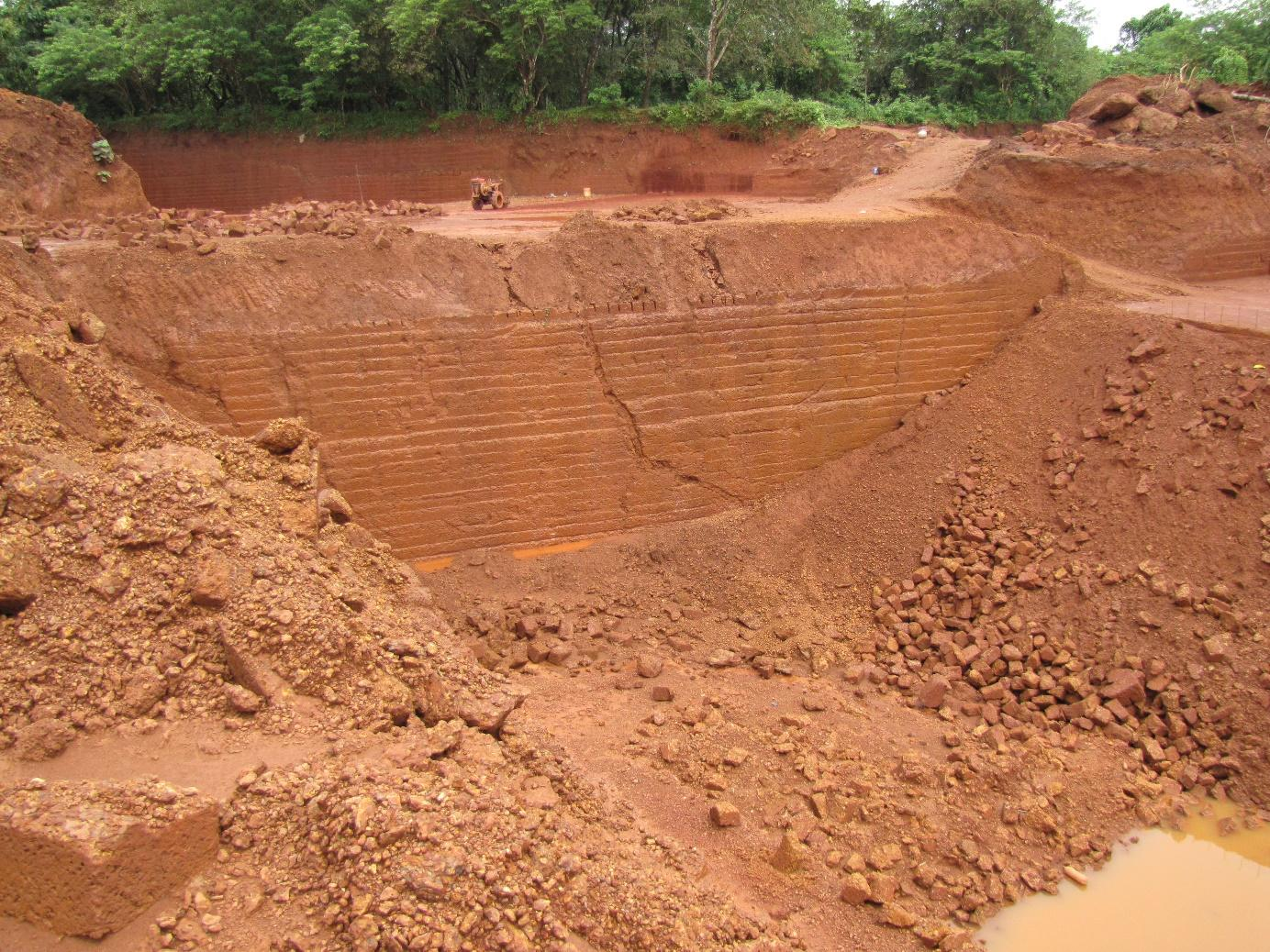
In India, laterite soil is found in ……………….
a. Jammu and Kashmir
b. Rajasthan
c. Kerala
d. Jharkhand
Answer
556.8k+ views
Hint:
Soil is a layer of unconsolidated material on the surface of the earth, in which plant are growing. Soils is a mixture of mineral grain from the earth, decomposing organic matter, and air voids. Soil is the earth material which links biosphere and atmosphere, hydrosphere and geosphere.
Complete step by step solution:
Soil formation:
- Solid rocks particles are broken down from mechanical weathering.
- Chemical weathering releases important nutrients from rock grains.
- Seeds are carried onto the soil grains and grow into plants which enrich the soil.
- Microorganisms the remains of plants to form humus which further enriches the soil.
- The cycle continues until the soil reaches maximum fertility given the climate it is in.
Types of soil:
- Alluvial soil
- Black soil
- Red soil
- Laterite soil
- Mountain soil
- Desert soil

Laterite soil forms as a result of excessive erosion by rain. Due to heavy rain, the humus contents from the topsoil descend into lower strata which are known as leaching. As the soil has less humus, it is fertile. This soil types are found in Kerala, Karnataka, Tamilnadu, Odisha and some parts of north-east.
Hence, the correct answer is option C.
Note:
In India, alluvial soil is covered with about $40\% $ of total land area. In laterites, tea, coffee, rubber, coconut, cinchona, etc., these plantation crops are growing. Laterite soil contains quartz, iron, zircon, tin, aluminium and manganese. Another name of laterite soil is known as red laterite soil, because of a reddish colour.
Soil is a layer of unconsolidated material on the surface of the earth, in which plant are growing. Soils is a mixture of mineral grain from the earth, decomposing organic matter, and air voids. Soil is the earth material which links biosphere and atmosphere, hydrosphere and geosphere.
Complete step by step solution:
Soil formation:
- Solid rocks particles are broken down from mechanical weathering.
- Chemical weathering releases important nutrients from rock grains.
- Seeds are carried onto the soil grains and grow into plants which enrich the soil.
- Microorganisms the remains of plants to form humus which further enriches the soil.
- The cycle continues until the soil reaches maximum fertility given the climate it is in.
Types of soil:
- Alluvial soil
- Black soil
- Red soil
- Laterite soil
- Mountain soil
- Desert soil

Laterite soil forms as a result of excessive erosion by rain. Due to heavy rain, the humus contents from the topsoil descend into lower strata which are known as leaching. As the soil has less humus, it is fertile. This soil types are found in Kerala, Karnataka, Tamilnadu, Odisha and some parts of north-east.
Hence, the correct answer is option C.
Note:
In India, alluvial soil is covered with about $40\% $ of total land area. In laterites, tea, coffee, rubber, coconut, cinchona, etc., these plantation crops are growing. Laterite soil contains quartz, iron, zircon, tin, aluminium and manganese. Another name of laterite soil is known as red laterite soil, because of a reddish colour.
Recently Updated Pages
Master Class 11 Economics: Engaging Questions & Answers for Success

Master Class 11 English: Engaging Questions & Answers for Success

Master Class 11 Social Science: Engaging Questions & Answers for Success

Master Class 11 Biology: Engaging Questions & Answers for Success

Class 11 Question and Answer - Your Ultimate Solutions Guide

Master Class 11 Business Studies: Engaging Questions & Answers for Success

Trending doubts
10 examples of friction in our daily life

One Metric ton is equal to kg A 10000 B 1000 C 100 class 11 physics CBSE

Difference Between Prokaryotic Cells and Eukaryotic Cells

1 Quintal is equal to a 110 kg b 10 kg c 100kg d 1000 class 11 physics CBSE

State the laws of reflection of light

Explain zero factorial class 11 maths CBSE




